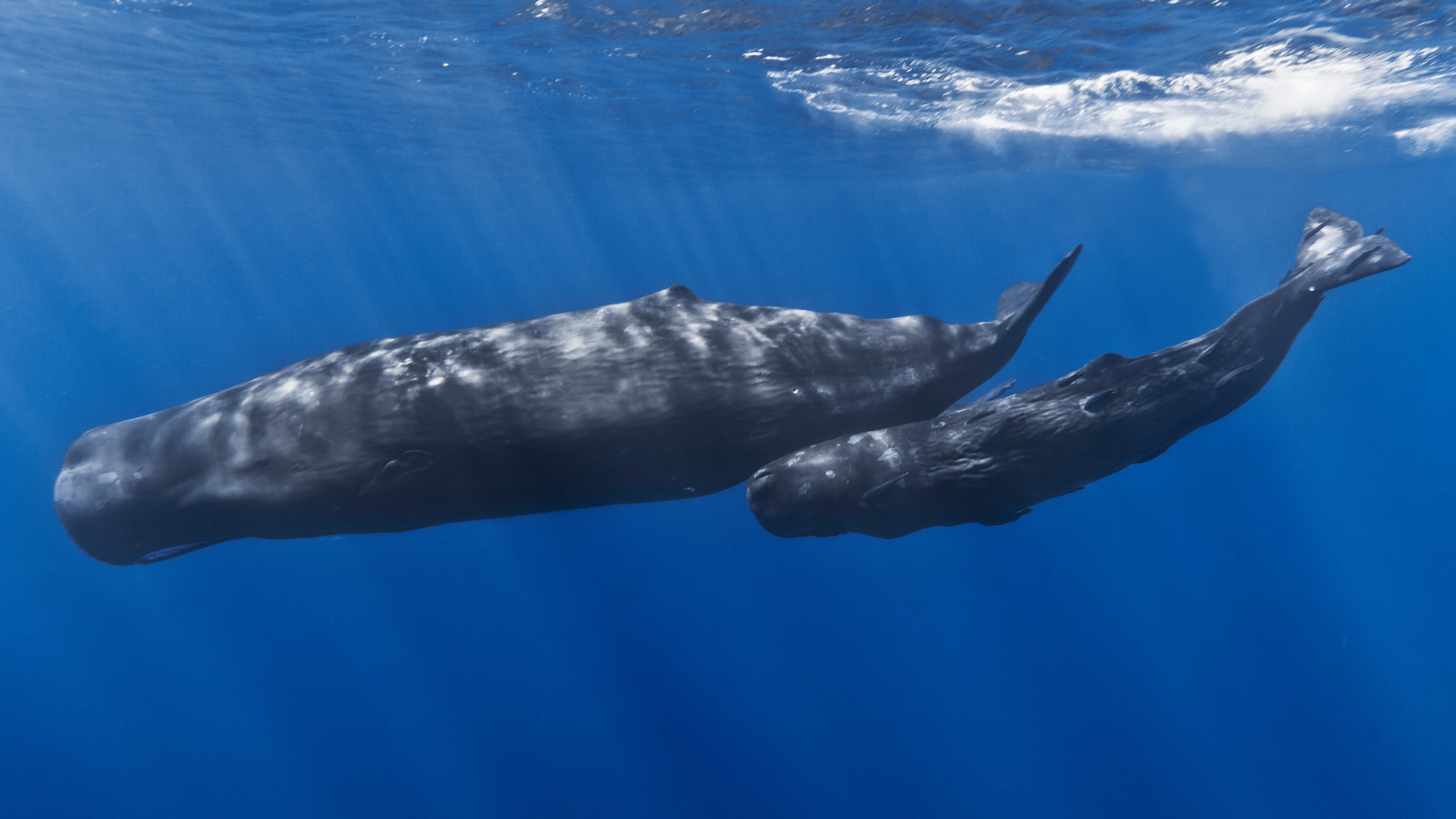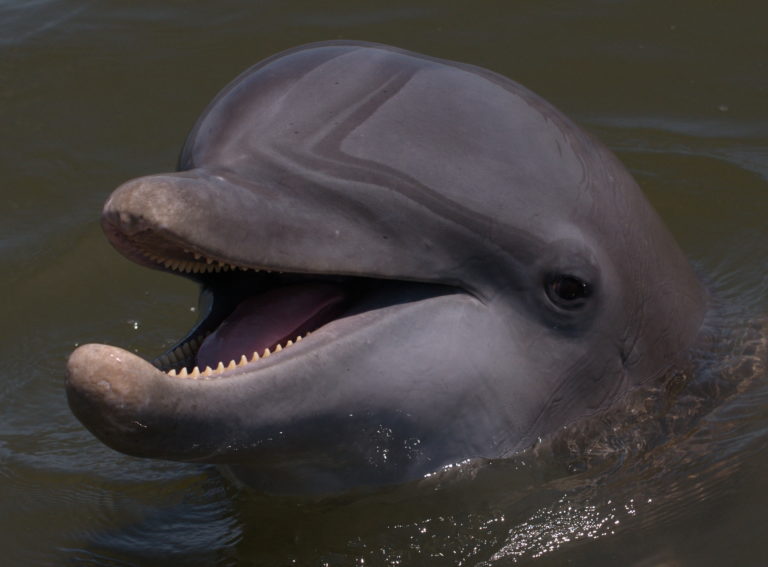Dogs pant, lizards bask in the sun, polar bears have a thick coat of translucent fur and humans sweat. All of these are different strategies used to regulate body temperature. Thermoregulation is the process that the panting dog, the basking lizard and all other animals use to maintain an optimum internal body temperature.
How does thermoregulation work in cetaceans—whales and dolphins—in the ocean where body heat can be lost 25 times faster than in the air? First, a couple of things to know: 1) thermoregulation is not a singular process, rather several anatomical and physiological mechanisms are in place in the cetacean body that work together to maintain proper body temperature and 2) thermoregulation is a two-way street, i.e., it involves the control of both heat loss and heat gain.
A sperm whale is a case study in temperature management in cetaceans. It’s very large with lots of blubber and can dive from the surface where the water temperature can be 80°F or more down to several thousand feet where the water temperature is just a few degrees above freezing.
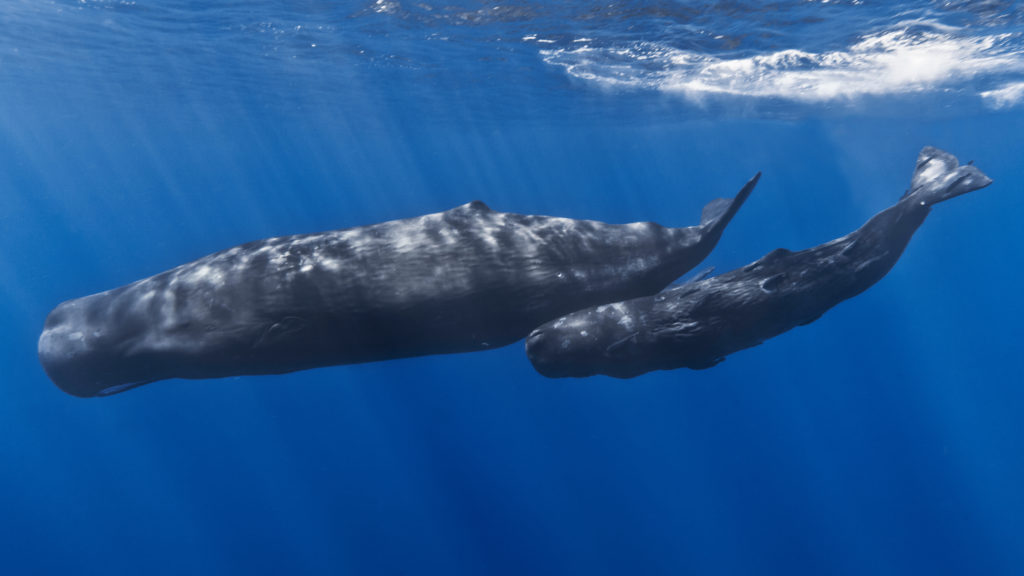
At the anatomical level, there are three major factors involved in thermoregulation. Most cetaceans have large bodies, creating a reduced surface area-to-volume ratio. This means that there is less skin surface area relative to internal volume to which heat can be lost. Cetaceans also have thick blubber layers that act as insulation against the cold water. Finally, they have countercurrent vascular systems. Hang on to this last term for a moment; we’ll get back to it in detail shortly. The benefit of these anatomical features to cetaceans is that they have a wide external temperature range (broad thermoneutral range) in which they can function normally without having to speed up their metabolism to increase body temperature.
Let’s get back to that term that we left hanging—countercurrent vascular systems. How are cetaceans able to maintain blood flow to appendages (flippers, fins and flukes), blubber and reproductive organs to prevent severe heat loss or freezing, as well as to prevent overheating? Cetaceans employ a countercurrent heat exchange (CCHE) system to solve this problem.
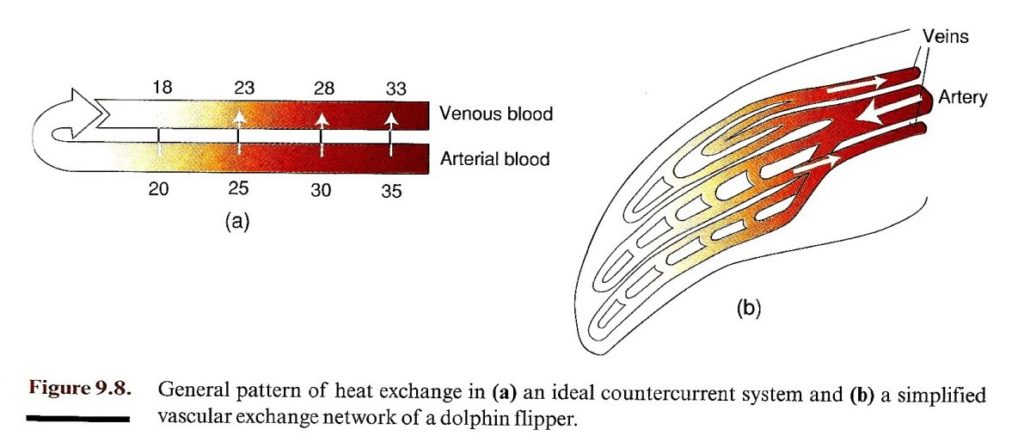
In the CCHE system, heat loss is reduced by circulating blood from the body core to the extremities. The main arteries that carry warm blood from the body core to the cooler extremities are surrounded closely by veins that are returning cooler blood to the core. The cool blood in the veins absorbs heat from the blood in the arteries to maintain a Goldilocks-like temperature gradient throughout the entire system that is neither too hot nor too cold for organs and tissues. As the blood moves through the complex of arteries and veins, the actual heat control is accomplished by vasodilation (widening of the vessel) or vasoconstriction (narrowing of the vessel). Perhaps the most unique feature of this whole system is that blood flows directly from the arteries to the veins, bypassing capillary beds, very different from how blood flow works in humans.
Check out this animation to see CCHE systems in action
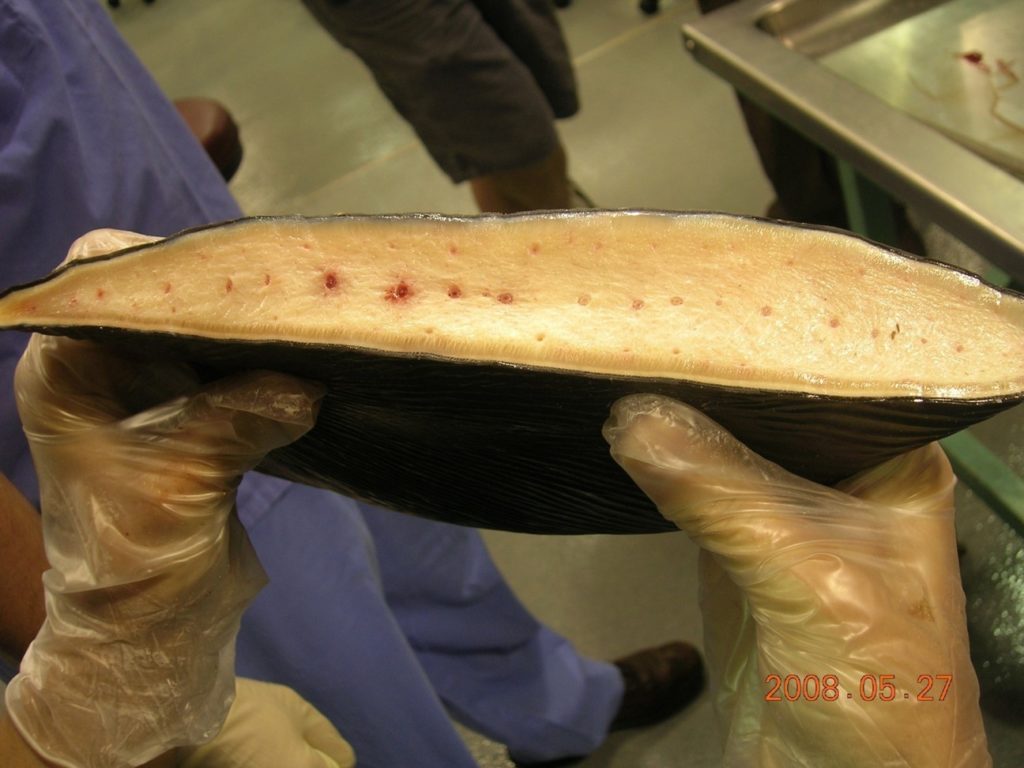
Some of our readers who have seen dolphins in the wild may have observed a pink belly when a dolphin leaps or rolls over. There’s a specific reason why those tissues may be that color. So far, we’ve looked at the general thermoregulatory mechanisms of cetaceans. In the next article, we’ll look at the specialized heating/cooling system needed for the protection and proper functioning of the reproductive and nervous systems.
For sources used in this blog and additional resources on this topic, please see the Resources page.
This piece is part of a series on marine mammal anatomy and physiology
* Edit: Photo credit for the CCHE diagram image was originally omitted from this piece due to a clerical error. Proper credit has been given.

